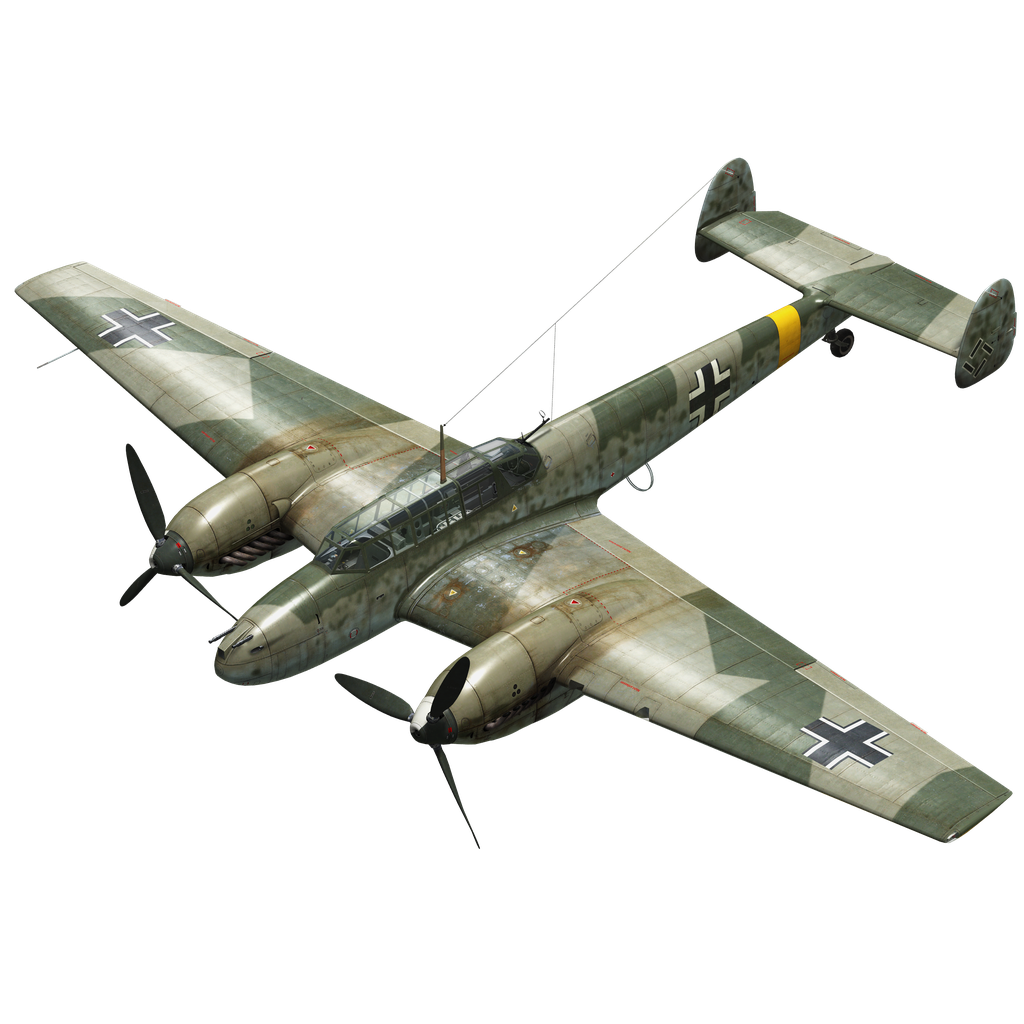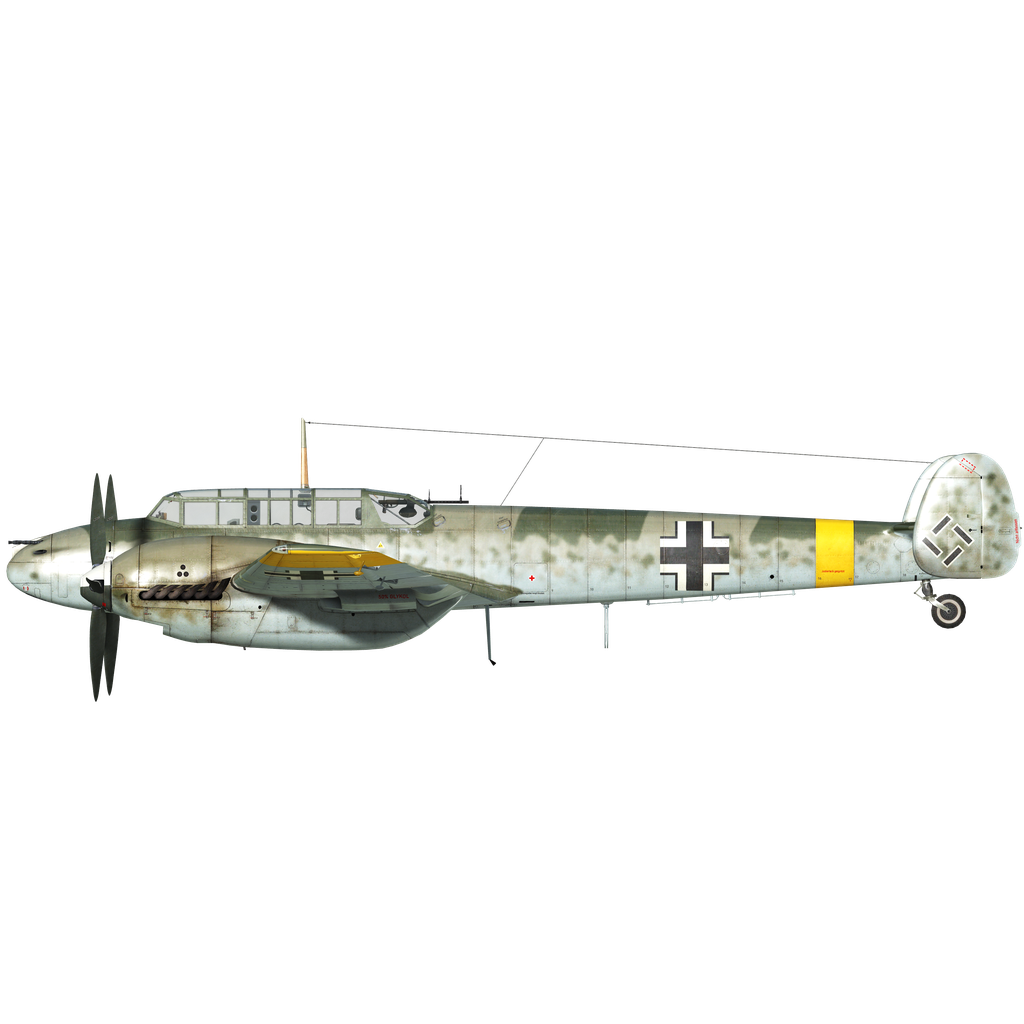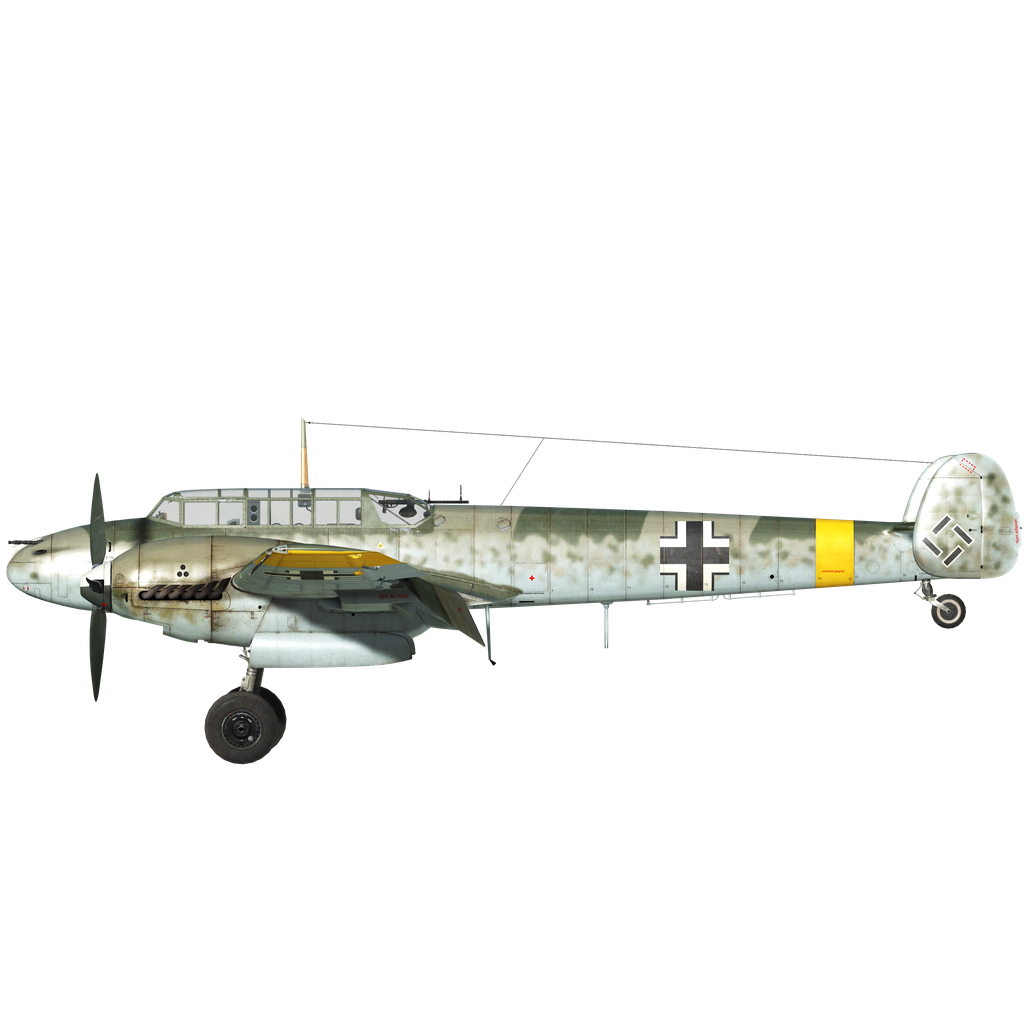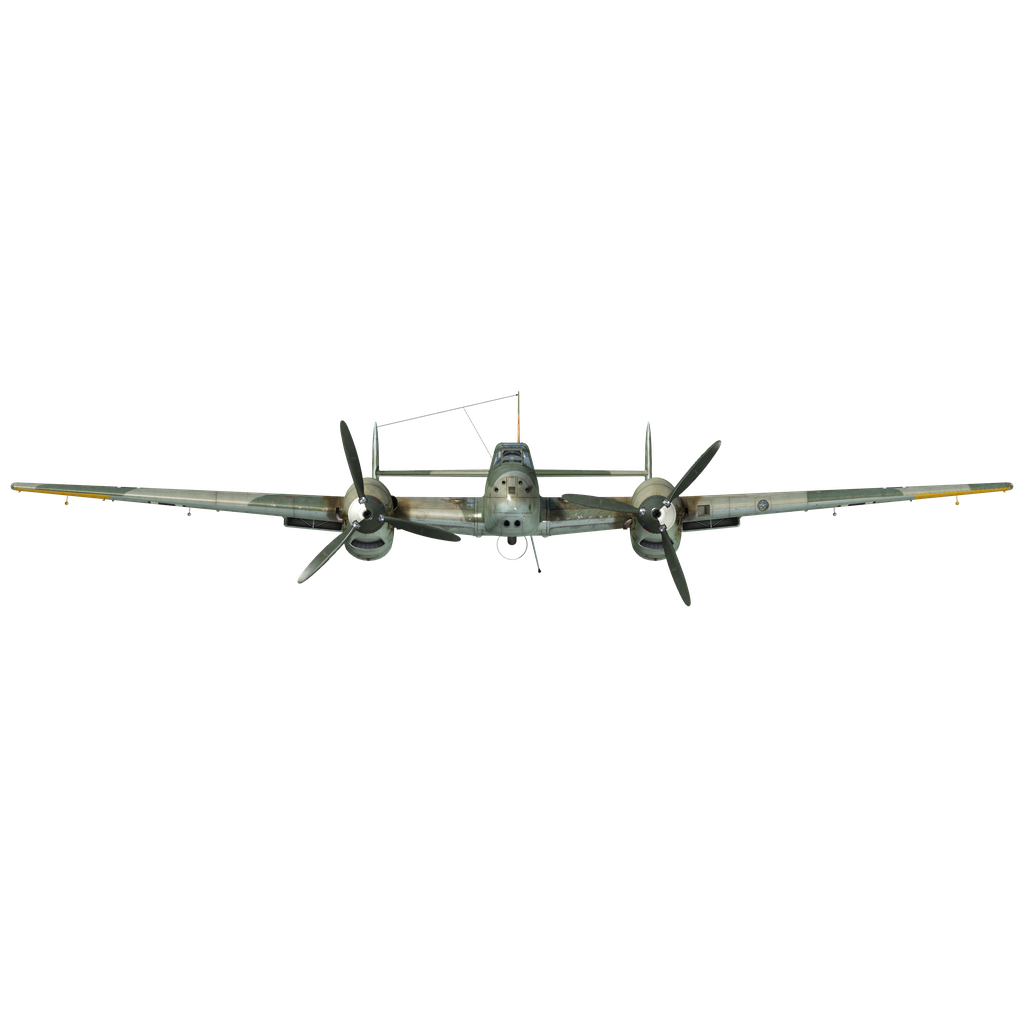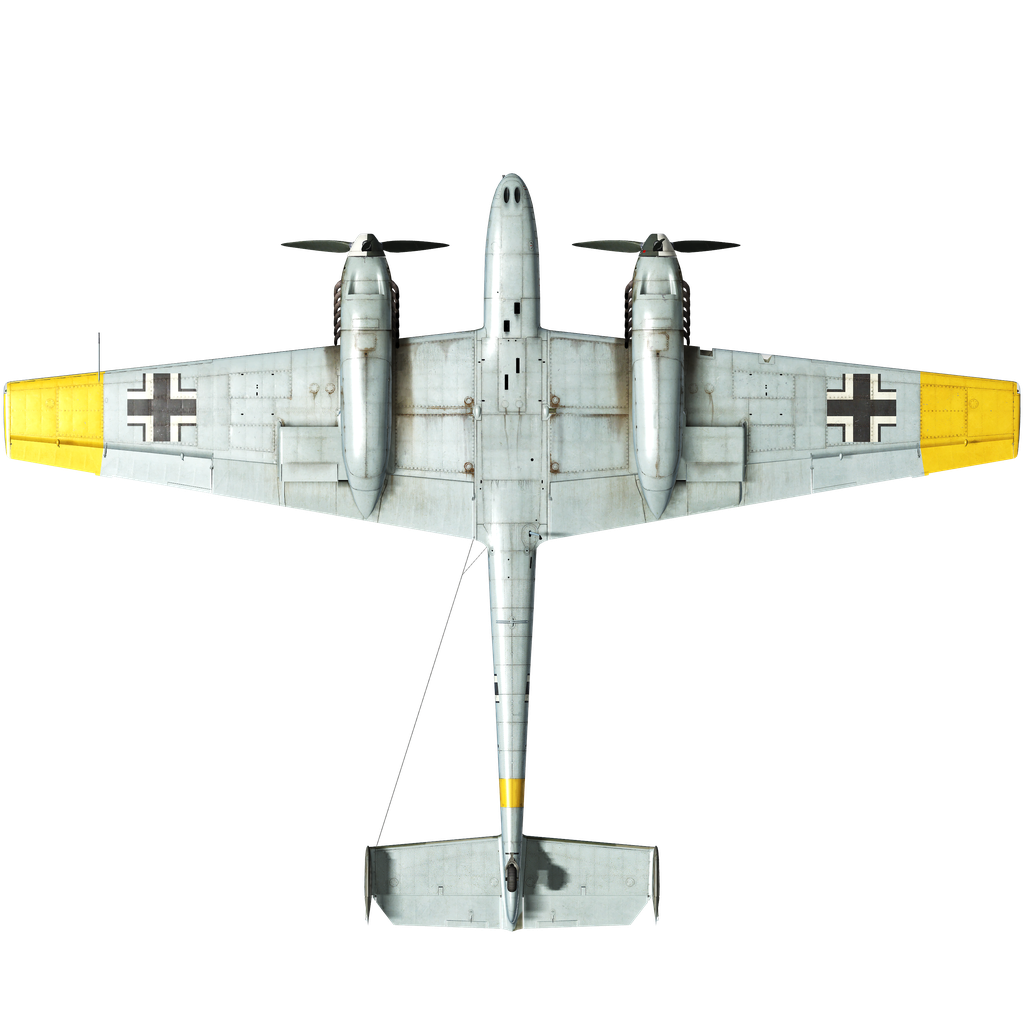The Bf 110 was designed in 1934 as a long-range multi-role fighter and bomber escort. At the time, this idea was being embraced by almost every country in the world, and creating the latest aircraft seemed like a logical step to take. The prototype first flew on May 12, 1936, and production of the aircraft began in August 1937, but the first production version with Daimler-Benz engines did not begin to be built until 1939 due to a delay in the production of the DB601 engines. A new modification of the Bf 110 D was introduced in 1940.
However, despite its good speed characteristics and powerful armament, this aircraft proved to be unsuitable for fighter missions under combat conditions. The Battle of Britain demonstrated the failure of the "heavy fighter" concept. Because of its heavy weight, the Bf 110 was inferior in climb and maneuverability to all the enemy's main single-engine fighters, and it came to the point that the "escort fighters" themselves were escorted by single-engine Bf 109 fighters. The Bf 110 E-1 modification was introduced as the Bf 110 was reclassified as a fighter-bomber. In 1942, the Bf 110 E-2, which differed from the previous version only in its longer fuselage, went into production.
The Bf 110 E-2 was a twin-engine, all-metal monoplane with a twin-tail unit, enclosed cockpit, and retractable landing gear with a tail wheel. Originally, the extended tail section of the E-2 fuselage contained a rescue boat, but because most of the planes were mainly used over land, the container with the boat was replaced by a conventional tail fairing. Unlike the previous models, the Bf 110 E modifications were equipped with DB601N engines with a take-off power of 1215 hp. The fighter-bombers also featured reinforced cockpit armor and improved fuel tank protection. To improve bombing efficiency, the aircraft was equipped with a Revi C/12D sight, which allowed bombs to be dropped from a shallow dive. Four 7.92 mm MG 17 machine guns were mounted in the upper nose section and two 20 mm MG FF/M cannons were fitted in the lower nose section. The rear upper hemisphere was protected by an MG 15 machine gun. Under the fuselage 2 ETC 500/IXb bomb racks were mounted to carry up to 500 kg of bombs and under the wings 4 ETC 50/VIIId racks were mounted to carry one 50 kg bomb each.
The Bf 110 E was equipped with an improved defensive gunner's mount - now the gunner did not have to raise the canopy to fire. Instead of two separate seats for the radio operator (one for radio operation and one for machine gun firing) a lightweight seat was installed.
For operations in North Africa, some of the aircraft were converted to the Bf-110 E-2/trop variant, which featured dust filters on the engine intakes, larger oil coolers, sealed gun barrel outlets, and sunshades in the cockpit.
A total of 322 Bf 110 E-2 were produced, which were used on both the Eastern and Western fronts. At the same time, the Bf 110 E-2 was a fully-fledged fighter-bomber, because after being relieved of its bomb load, it could not only fend off machine-gun fire like a bomber but also fight like a fighter, albeit with low maneuverability.
1. W. Creen "The Warplanes of the Third Reich", Galahad Books, 1986
2. "Wings of the Luftwaffe" Translation of W. Creen's book "The Warplanes of the Third Reich" by A. Firsov, 1993.
3. V. Kudrin "Hopes not justified" Journal "Modelist-Konstruktor", № 9, 1996.
4. Materials from the site airwar.ru
